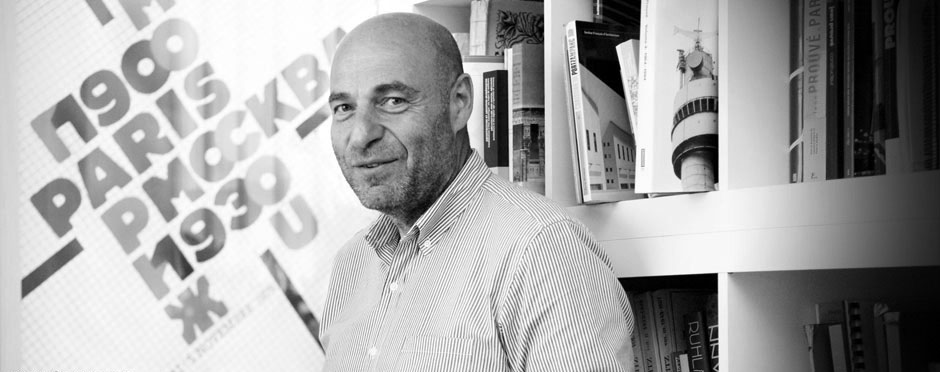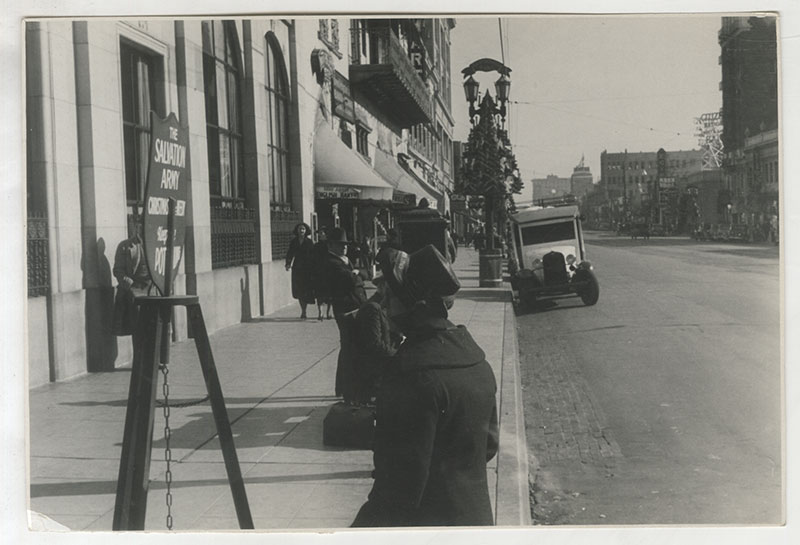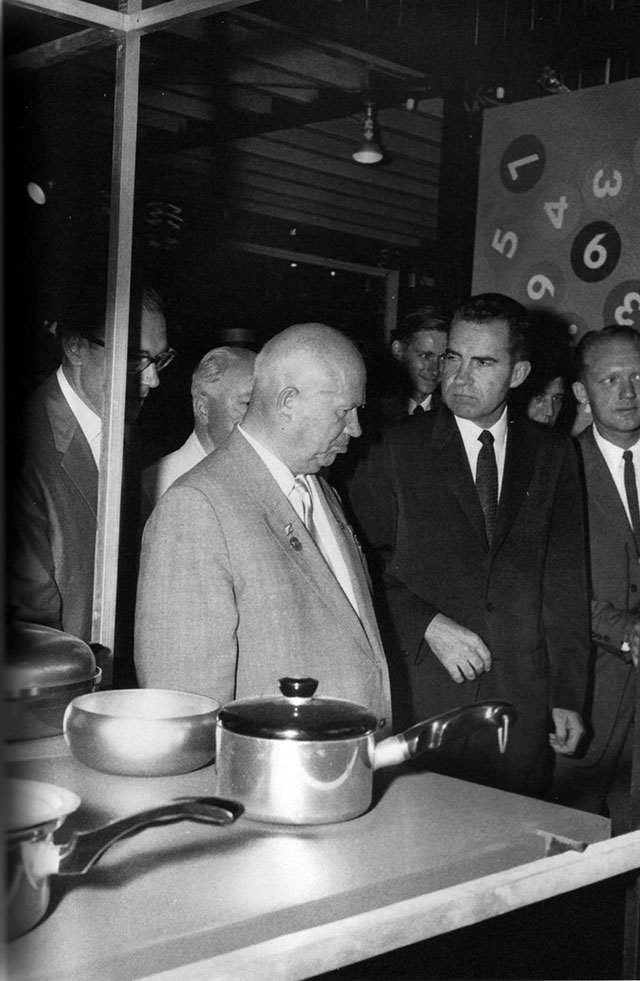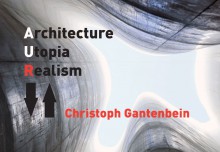Pozivamo Vas na dvanaesto predavanje u okviru ciklusa Arhitektura. Utopija. Realizam. – AUR 2014/15: program gostujućih predavanja na kome će se predstaviti Jean Louis Cohen, PhD, arhitekta, istoričar, kustos, Sheldon H. Solow profesor istorije arhitekture na Institute of Fine Arts / New York University. Predavanje Building a new New World: Amerikanizm in Russian Architecture pripada tematskom ciklusu Istorija i teorija.
Dobrodošli!

Jean Louis Cohen | © Gitty Darugar
Vreme i mesto
/18.00 časova/
/Univerzitet u Beogradu – Arhitektonski fakultet/
/Amfiteatar/
/18.00 hours/
/University of Belgrade – Faculty of Architecture/
/Amphitheater/
Abstract
Izgradnja novog Novog sveta: amerikanizam u ruskoj arhitekturi
U okviru šireg fenomena amerikanizma, sistema kulturnog transfera karakterističnog za modernost i modernizaciju širom sveta, međusobni odnos s najviše paradoksa je onaj uspostavljen između Rusije i Sjedinjenih država, tokom dugog dvadesetog veka.
Svaki sticaj istorijskih prilika u sovjetskoj povesti, odlikovale su promene u reprezentaciji američke tehnologije, teritorijalnog razvoja, arhitekture i vizuelne kulture.
Sveobuhvatna analiza fenomena, koji su vrlo često ograničeni na – monumentalne – primere visokih građevina, podignutih u kasnoj staljinističkoj eri, trebalo bi da bude razvijena, kroz prizmu arhitektonskog i urbanističkog projektovanja, tako da se oslanja na analizu diskursa, projekata i građevina. Politika, umetnost, književnost, i tehnologija, trebalo bi takođe da budu uključeni u diskusiju o idealnim, i povremeno, izvedenim projektima.
Building a new New World: Amerikanizm in Russian Architecture
Within the broad phenomenon of Americanism, a system of cultural transfer characteristic of modernity and modernization worldwide, the most paradoxical bilateral relationship is the one established between Russia and the United States during the long 20th century.
Every historical conjuncture in Soviet history has been characterized by changing representations of America’s technology, territorial development, architecture, and visual culture.
A comprehensive analysis of a phenomenon all too often limited to the – monumental – case of the high-rise buildings erected in the late Stalinist era should be developed, through the prism of architecture and urban design, relying on the analysis of discourse, designs and buildings. Politics, art, literature, and technology have also to be involved in the discussion of ideal, and occasionally, built projects.

Roman Cieslewicz, dizajn naslovne stranice za Opus Magazine, 1968 | © collection JLC
BIO
Žan-Luj Koen je arhitekta i istoričar, s dugim iskustvom u istraživanju moderne arhitekture i urbanizma. Studije arhitekture pohađao je na École Spéciale d’Architecture i Unité Pédagogique n° 6, u Parizu, gde je diplomirao 1973. godine; doktorat iz oblasti istorije umetnosti stekao je 1985, na École des Hautes Études en Sciences Sociales, kao i habilitaciju, najviši postdoktorski akademski stepen obrazovanja, 1992. godine.
Posle perioda u kojem je vodio Program arhitektonskih istraživanja pri Ministarstvu stanovanja Francuske, dobio je profesuru u oblasti istraživanja na arhitektonskoj školi: École d’architecture Paris-Villemin, 1983-1996, a u periodu od 1996. do 2004, mesto profesora istorije urbanog planiranja, na Institut Français d’Urbanisme, Univerziteta u Parizu. Od 1994, Žan-Luj Koen je Sheldon H. Solow profesor istorije arhitekture na Institute of Fine Arts, na Univerzitetu u Njujorku, a od 2013, na poziciji je profesora, s trogodišnjim mandatom na Collège de France, u Parizu.
Istraživanja profesora Koena usmerena su uglavnom na arhitekturu i urbano planiranje u dvadesetom veku. Posebno je proučavao arhitektonsku kulturu Nemačke i Rusije, kolonijalnu situaciju u Maroku i Alžiru, arhitekturu tokom Drugog svetskog rata; opsežno je tumačio Le Koribzjeov rad i istoriju planiranja Pariza. O središnjem pitanju u svom radu, pitanju kulturnog transfera u arhitekturi, urbanizmu, i vizuelnoj kulturi, profesor Koen diskutuje kroz prizmu odnosa između Italije, Nemačke i Francuske i, posebno, kroz prizmu odnosa između Rusije i Zapada.
U periodu od 1997 do 2003, imenovan je od strane ministra kulture u vladi Francuske, da organizuje Cité de l’architecture, muzejski, istraživački i izložbeni centar u Parizu, u Palati Šajo (Palais de Chaillot), koji je otvoren 2007. U toku ovog perioda, Žan-Luj Koen je vodio dva glavna odeljenja ovog centra: Institut Français d’Architecture (Francuski institut za arhitekturu) kao i Musée des Monuments Français (Muzej spomenika Francuske).
Profesor Koen je bio kurator brojnih izložbi, među kojima: The Lost Vanguard u MoMA, Museum of Modern Art (2007); Scenes of the World to Come u Canadian Center for Architecture (1995); Architecture in Uniform na istom mestu (2011), kao i u Cité de l’architecture et du patrimoine i MAXXI, Museo nazionale delle arti del XXI secolo (2014); Paris-Moscou (1979) i izložbe povodom proslave stogodišnjice rođenja L’aventure Le Corbusier (1987), obe izložbe u Centre Georges Pompidou; Le Corbusier, tainy tvorchestva u Muzeй izobrazitelьnыh iskusstv im. A.S. Puškina u Moskvi (2012); Interférences – architecture, Allemagne, France u Musée d’art moderne et contemporain, Strazbur, i Deutsches Architekturmuseum, Frankfurt (2013); izložba Žan-Luj Koena Le Corbusier, an Atlas of Modern Landscapes otvorena je u junu 2013, u MoMA (Muzej moderne umetnosti, Njujork), a sledeće godine je gostovala u Španiji. Takođe u 2014. godini, Žan-Luj Koen je bio kurator Paviljona Francuske na Venecijanskom bijenalu arhitekture, kada je primio i specijalno priznanje žirija.
Žan-Luj Koen je birani član Académie d’architecture, u Parizu, Akademie der Künste, u Berlinu, Rossíйskaя akadémiя arhitektúrы i stroítelьnыh naúk, u Moskvi, i Accademia di San Luca, u Rimu. Profesor Koen je bio nosilac istraživačkih stipendija u National Gallery of Art’s Center for Advanced Study in the Visual Arts (1987), kao i stipendista fondacije Geti u Getty Research Institute (1992-93). Takođe, dobitnik je individualne stipendije Graham Foundation u 2012 za publikaciju o francuskom arhitektonskom modernizmu, koja će uskoro biti objavljena u izdanju Reaktion Books; Žan-Luj Koen je istraživač John S. Guggenheim Foundation za 2013.
Dobitnik je mnogobrojnih nagrada, uključujući: Veliku nagradu za knjigu iz oblasti arhitekture od Académie d’Architecture, u Parizu (1996, 2012), Medalju, priznanje u oblasti arhitektonske analize od iste institucije (2003), the Art Book Prize (2013), kao i the Alice Davis Hitchcock Book Award, od Društva arhitektonskih istoričara (the Society of Architectural Historians, 2013). Profesor Koen je dobitnik Schelling Architekturtheorie-Preis, 2010, koju dodeljuje Fondacija Šeling (Die Schelling Architekturstiftung), iz Karlsruea , i koja je najznačajnija među evropskim nagradama u svom rangu. Vlada Francuske proglasila je Žan-Luja Koena vitezom Reda umetnosti i književnosti.

Grigori Barkhin, Prvi projekat za Zgradu lista Izvestija, Moskva, 1922. | © collection JLC
BIO
Jean-Louis Cohen is an architect and historian, with a long track record in research on modern architecture and city planning. He has studied architecture at the École Spéciale d’Architecture and at the Unité Pédagogique n° 6 in Paris, graduating in 1973, and has received a Ph.D. in art history from the École des Hautes Études en Sciences Sociales in 1985, and a habilitation from the same institution in 1992.
After having directed the Architectural Research Program at the French Ministry of Housing, he held from 1983 to 1996 a research professorship at the School of Architecture Paris-Villemin, and from 1996 to 2004, a chair in town-planning history at the Institut Français d’Urbanisme, University of Paris. Since 1994, he holds the Sheldon H. Solow Chair for the History of Architecture at New York University’s Institute of Fine Arts. In 2013, he has received a three-year chair at the Collège de France in Paris.
His research activity has focused mainly on 20th-century architecture and urban planning. He has studied in particular German and Russian architectural cultures, colonial situations in Morocco and Algeria, architecture during World War II, and extensively interpreted Le Corbusier’s work and Paris planning history. The question of cultural transfer in architecture, urban design, and visual culture is central in his work, and has been discussed in reference to the relationships between Italy, Germany, and France and, with particular emphasis, in reference to the interaction between Russia and the West.
From 1997 to 2003, the French Minister of Culture appointed him to create the Cité de l’architecture, a museum, research and exhibition center in the Paris Palais de Chaillot, which opened in 2007. During that period, he directed the Institut Français d’Architecture and the Musée des Monuments Français, the two main components of the Cité.
He has been a curator for numerous exhibitions including The Lost Vanguard, at the Museum of Modern Art (2007); Scenes of the World to Come, at the Canadian Center for Architecture (1995); Architecture in Uniform at the same venue (2011), and at the Cité de l’architecture et du patrimoine and MAXXI (2014); Paris-Moscou [Paris-Moscow] (1979) and the centennial show L’aventure Le Corbusier [The Advanture Le Corbusier] (1987), both at the Centre Georges Pompidou; Le Corbusier, tainy tvorchestva, at the Pushkin Museum in Moscow (2012); Interférences – architecture, Allemagne, France [Interferences: Architecture, Germany, France] at the Musée d’art moderne et contemporain, Strasbourg, and the Deutsches Architekturmuseum, Frankfurt (2013); his show Le Corbusier, an Atlas of Modern Landscapes, has opened at MoMA in June 2013 and has traveled to Spain in 2014. In 2014, he has curated the French Pavilion at the Venice Architecture Biennale, receiving the special mention of the jury.
Jean-Louis Cohen is an elected member of the Académie d’architecture, in Paris, the Akademie der Künste, in Berlin, the Russian Academy of Architecture, in Moscow, and the Accademia di San Luca, in Rome. He has been a research fellow at the National Gallery of Art’s Center for Advanced Study in the Visual Arts (1987), and a Getty scholar at the Getty Research institute (1992-93). He is the beneficiary a Graham Foundation individual grant in 2012 for the publication by Reaktion Books of his forthcoming history of French architectural modernism, and a fellow of the John S. Guggenheim Foundation for 2013. He will be the curator of the French pavilion at the 2014 Venice Architecture Biennale.
He has received numerous awards, including the Great Prize of the architecture book from the Académie d’Architecture in Paris (1996, and 2012), the Medal for architectural analysis of the same institution (2003), the Art Book Prize (2013), and the Alice Davis Hitchcock Book Award of the Society of Architectural Historians (2013). He has been awarded by the Schelling Foundation in Karlsruhe the Schelling Architekturtheorie Preis, the leading such European distinction (2010). The French government has appointed him a Knight in the order of Arts and Letters.

Ilya Ilf, Panorama Holivuda, 1935, Ruski državni arhiv za književnost i umetnost, Moskva | © collection JLC
Publications
- La modernité, promesse ou menace? France, 101 bâtiments 1914-2014 [Modernity, promise or threat? France, 101 buildings 1914-2014], Paris, Dominique Carré, 2014, with Vanessa Grossman.
- Le Corbusier: an Atlas of Modern Landscapes, New York: Museum of Modern Art, 2013.
- Interférences / Interferenzen: architecture, Allemagne, France 1800-2000 [Interferences: Architecture, Germany, France 1800-2000] (ed., with Hartmut Frank), Strasbourg: Musées de la Ville de Strasbourg, 2013.
- The Future of Architecture. Since 1889, London: Phaidon, 2012.
- Architecture in Uniform; Designing and Building for WWII, Paris: Hazan, 2011.
- New York, Paris: Mazenod, 2008.
- Mies van der Rohe, Paris: Hazan; Basel, Berlin, Boston: Birkhäuser, 2007.
- Above Paris, the Aerial Survey of Roger Henrard, New York : Princeton Architectural Press, 2006.
- Liquid Stone, New Architecture in Concrete (ed., with G. Martin Moeller, Jr.), New York : Princeton Architectural Press, 2006.
- Le Corbusier, la planète comme chantier [Le Corbusier, the planet as building site], Paris: Textuel, 2005 (new edition 2015).
- Alger, paysage urbain et architectures 1800-2000 [Algiers, Urban Landscape and Architectures 1800-2000], Paris: Éditions de l’Imprimeur, 2003 (ed., with Nabila Oulebsir and Youcef Kanoun).
- Encyclopédie Perret [Encyclopedia Perret], Paris: Éditions du Patrimoine/Institut français d’architecture, 2002 (ed., with Joseph Abram and Guy Lambert).
- Casablanca, Colonial Myths and Architectural Ventures, New York: The Monacelli Press, 2002 (with Monique Eleb).
- Les Années 30, l’architecture et les arts de l’espace entre industrie et nostalgie [The 30s, architecture and art of space between industria and nostalgia] (ed.), Paris: Éditions du Patrimoine, 1997.
- Scenes of the World to Come; European Architecture and the American Challenge 1893-1960, Paris: Flammarion, 1995.
- L’architecture d’André Lurçat (1894-1970); l’autocritique d’un moderne [Architecture of André Lurçat (1894-1970); the self-critique of a moderne], Liege: Pierre Mardaga, 1995.
- Des fortifs au périf, Paris: les seuils de la ville [Fortifications at the rim, Paris: the gates of the city], Paris, Picard: 1992 (with André Lortie).
- Le Corbusier and the Mystique of the USSR, Theories and Projects for Moscow, 1928-1936, Princeton: Princeton University Press, 1992.

Automobil GAZ M 20 Pobeda, ispred složene siluete Moskve, oko 1954. | © collection JLC
Selected publications on the theme of the lecture:
- America, a Soviet Ideal, Architectural Association Files, n. 5 (January 1984): 32-40.
- L’Oncle Sam au pays des Soviets: le temps des avant-gardes [Uncle Sam in the Soviets lands: the time of the avant-gardes], in Américanisme et modernité, l’idéal américain dans l’architecture [Americanism and modernity, the American ideal in architecture], edited by Jean-Louis Cohen and Hubert Damisch (Paris: Flammarion, 1993), 403-435.
- Le ballet mécanique de Tchernikhov; ou l’Amerikanizm fantastique [The mechanical ballet of Chernikhov; or the Fantastic Amerikanizm], in Iakov Tchernikhov [Iakov Chernikhov], edited by Carlo Olmo and Alessandro de Magistris (Paris: Somogy; Turin: Allemandi, 1995), 61-78.
- Scenes of the World to Come: European Architecture and the American Challenge, 1893-1960, Paris: Flammarion; Montreal: Canadian Centre for Architecture, 1995.
- Uneasy Crossings; The Architecture of the Russian Avant-garde Between East and West, in Building the Revolution; Soviet Art and Architecture 1915-1935, edited by MaryAnne Stevens and Maria Tsatsanoglou (London: Royal Academy of Art, 2011), 13-21.
- [American] Objects of [Soviet] Desire, in Iain Borden, Murray Fraser, Barbara Penner, ed. Forty Ways to Think About Architecture. Architectural History and Theory Today (Chichester: Wiley, 2014), 127-133.









